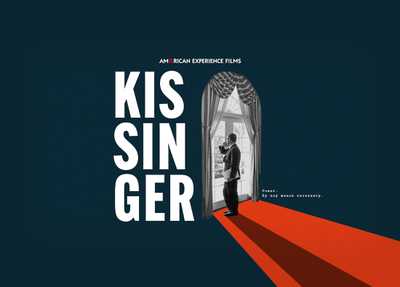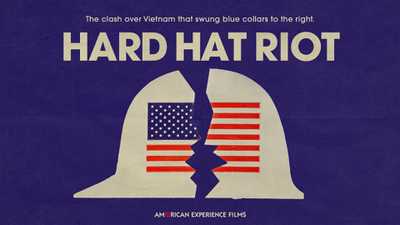New York City in the late 1970s was plagued by severe economic and political troubles unlike any the city's inhabitants had experienced before. Faced with economic stagnation, industrial decline, and the looming threat of bankruptcy, the City of New York responded by laying off city workers and cutting municipal services such as sanitation and after-school programs. The city's already high unemployment rates got higher, and many middle class families — more than 820,000 people — fled to the suburbs in a movement known as white flight, desperate for jobs. Others, angry at the cut in social services and feeling neglected by their government, turned to violence; crime rates rapidly increased as drugs, vandalism and theft became the norm. When the power unexpectedly failed on the night of July 13th, 1977, the darkness and confusion provided an opportunity for even more acts of aggression, such as looting, to take place throughout the city. Explore images of New York in the 1970s, including the years leading up to the blackout, the effects of the fiscal crisis, and the chaos that ensued when the lights went out.
-

In the poor neighborhood of the South Bronx in the early '70s, hundreds of people destroyed their own property in order to collect their insurance value. In the year 1970 alone, a total of 72,961 abandoned cars were towed away from New York. Above, four young boys play atop the hood of an abandoned car.
Credit: Getty Images -

The city hit a 12% unemployment rate in 1975, significantly higher than the national average rate of 8.5%. Many people, like the man above begging on West 42nd Street in Manhattan, were desperate for money and for jobs.
Credit: Getty Images -

In 1975, 10,000 sanitation men went on strike in order to protest the 2,934 layoffs that the city had administered to their department. Here, garbage sits uncollected outside of a subway entrance on East 14th Street near Union Square.
Credit: Getty Images -

Covered in graffiti and littered with trash, Grand Central-42nd Street station was still a hub for commuters. By 1977, the city had increased transit fares by roughly 40% in an attempt to bring in more revenue for maintenance and infrastructure repair.
Credit: Getty Images -

On the night of Wednesday, July 13th, 1977, the power went out in all of New York City and parts of Westchester County, leaving eight million people in the dark. The power failure was attributed to lightning that struck several critical transmission lines in northern Westchester County during a severe thunderstorm.
Credit: Associated Press -

The blackout began on the first night of a sweltering nine-day heat wave that would become the hottest in New York City's history. Here, people stand outside on Greenpoint Ave. in Brooklyn during the blackout.
Credit: Bolivar Arellano -

In some neighborhoods, looting began almost immediately after all power was lost at 9:34 pm. Along upper Broadway, mannequins were stripped of their clothes and strewn among broken store windows.
Credit: Associated Press -

Author Jonathan Mahler recalls that "just minutes after the lights [went] out, you [had] people just streaming into Broadway, smashing the windows of stores in every conceivable way." Here, a man reaches through the shattered windows of a looted jewelry store on Utica Ave. in Brooklyn.
Credit: Associated Press -

Some people continued their daily routines despite the fact that all of New York City and its boroughs were in the dark. Here, people at Chapman's Restaurant in midtown Manhattan ignore the blackout and continue their drinking by candlelight.
Credit: Associated Press -

The only lights visible in this NYC skyline from Queens are those of a Waterside Con Edison plant, where employees were working urgently to restore power.
Credit: Getty Images -

At Con Edison, engineers worked to bring in power from the outside to New York's boroughs. They had to pick up one network at a time, each one taking about 15 minutes to restore. The total restoration process took just over 25 hours.
Credit: Jack Feinstein -

The blackout continued into the next day. There had been 1,000 major fires throughout the city the night before, causing millions of dollars in damage. "Not only did they loot the stores, they burnt them. And to me, that was the ultimate violation," one storeowner said.
Credit: Magnum Photos -

Novelist Ernesto Quinonez, who was 11 years old during the 1977 blackout, said of his experience, "It felt like some sort of bomb had gone off… and all you had was a whole bunch of confetti and paper. [The city's] frustration had been released."
Credit: Associated Press -

Certain neighborhoods suffered so many losses from fire, stolen property, and physical damage that businesses had no choice but to shut down. Here, passersby at Utica and Union St. and Eastern Parkway in Brooklyn look on at the destroyed stores and refuse from a long night of looting.
Credit: Getty Images -

Trophies By Syl, a sporting goods and trophies shop owned by Elzora Williamson and her husband, lost $350,000 in merchandise due to looting during the blackout. "We thought of it as more than a store," Williamson said.
Credit: Elzora Williamson -

By 10:39pm on July 14th — more than 24 hours after the city-wide electrical blackout — power was restored to the city of New York. The city's problems, however, were far from solved. In the aftermath of the blackout, Mayor Abraham Beame said over 3,000 people were arrested, 132 policemen were injured, and over 1,500 businesses were looted.
Credit: Associated Press







